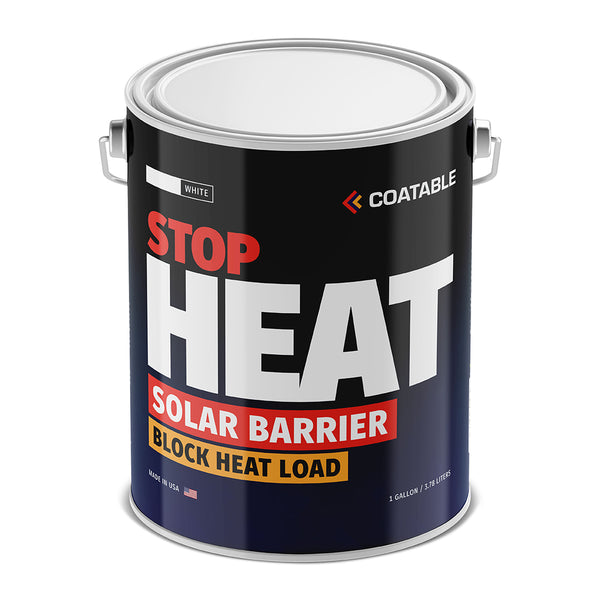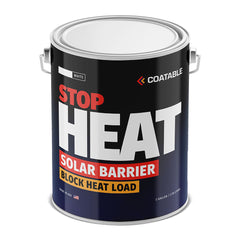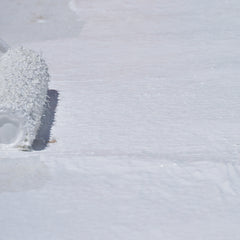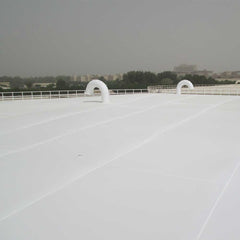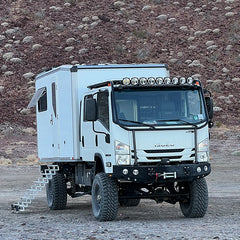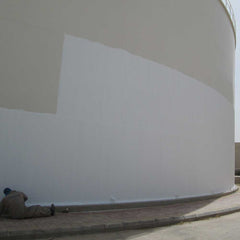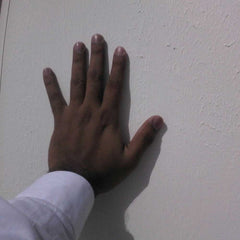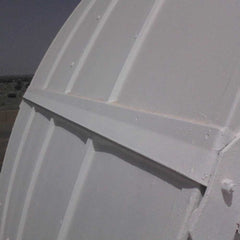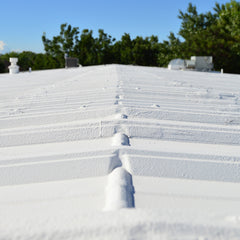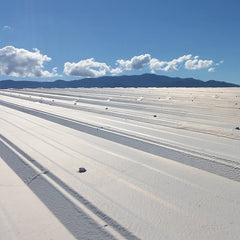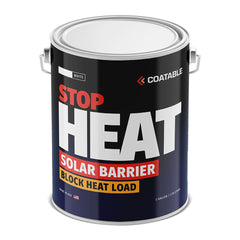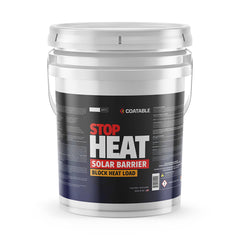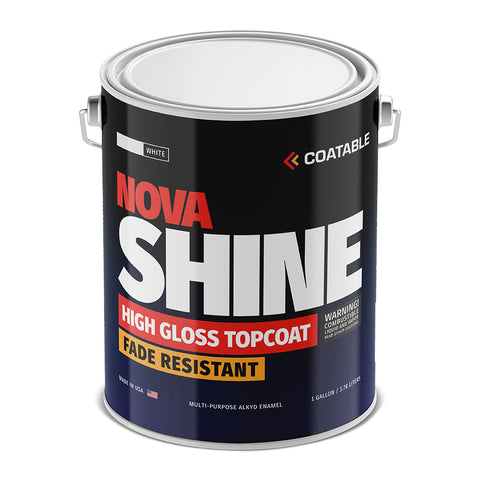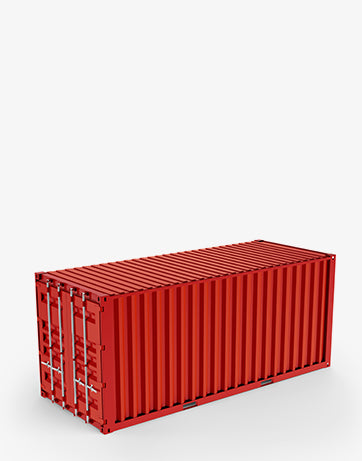Stop Heat
Coatable
Reflective Coating
In Stock
Acrylic/Urethane Blend (Ceramic)
Features
DESCRIPTION: STOP HEAT is a water-borne, high-performance coating solution designed to help reduce solar heat gain on exterior surfaces. Standard paints can absorb solar radiation and result in elevated surface temperatures. STOP HEAT is formulated with ceramics to reflect and re-emit radiant heat, which may contribute to lower surface temperatures in sun-exposed areas. Once applied by brush, roller, or spray, STOP HEAT can support improved surface comfort and may help reduce heat buildup through its reflective and emissive properties. STOP HEAT is flexible and durable, with low permeability that helps resist corrosion and visible surface deterioration. Suitable for use on buildings, RVs, boats, equipment, and similar applications.
Disclaimer: Actual performance depends on surface type, preparation, color, climate, and application method. STOP HEAT is not insulation and does not have a certified R-value. It should not be used as a substitute for conventional insulation or as a primary energy-saving product.
Characteristics:
- Easy to apply – brush, roll, or spray
- Ceramic-infused formula designed for solar reflectivity
- Quick dry time: 2-hour overcoat at 70°F (21°C), 40% humidity & direct sunlight (may vary based on conditions)
- Low VOC – tested at 21 grams per liter
- Non-flammable – water-based
- Cleans easily with soap and water
- Mold & mildew resistant
Typical Applications:
- Metal roofs & walls
- Mobile homes and RV roofs
- Shipping containers
- AC unit shells, exposed metal ducting
- Marine wheelhouses and vertical metal
- Industrial tanks storing light hydrocarbons
- Agricultural silos, horse trailers, chicken and livestock structures
- Other exterior structures exposed to solar radiation
Recommended Primers:
- Non-rusted galvanized roofs require no primer
- Rusted metal requires RUST BASE primer
(Minimum 2 coats, each coat applied at 200 ft² per gallon) - For concrete use RUST BASE as a primer to seal the surface
(Minimum 2 coats, each coat applied at 200 ft² per gallon) - Tar, Plastic, TPO, PVC, Mod bit, Vinyl or EPDM requires AUTO PREP
SPREAD RATE: Proper thickness can be achieved in 1-2 coats, but STOPHEAT should always be applied to a wet mil thickness of 17 mils wet / 9.3 mils dry (431 micron wet / 236 micron dry). Each gallon covers 95 sq. ft./ 8.82 sq. m.
Technical Informations
SURFACE PREPARATION: Surfaces should be clean, dry and sound. Existing surface dirt, salts, oil, tar, grease and film must be removed prior to application of STOP HEAT. STOP HEAT may be applied to other surfaces: metal, masonry, and wood following preparation procedures recommended according to manufacturer’s specification sheet. Use RUST BASE as a primer when needed on metal and concrete surfaces. Refer to RUST BASE technical data sheet for overcoat window. Modified bitumen, asphalt roofing, PVC, TPO and single-ply membranes must be primed with AUTO PREP. Please note: If any existing paint or coating is not firmly bonded, the existing paint or coating may fail and the surface will require the removal of all existing paint by power wash or abrasive blasting before the application of STOP HEAT.
APPLICATION INSTRUCTIONS: STOP HEAT can be applied by brush, roller or airless spray equipment. Mix by hand/mechanical for three minutes, and then apply evenly using the cross hatch method, up-and-down, side-to-side motion to build up your thickness. If spray equipment is used, carbide steel tips (.031) are recommended. IMPORTANT: ALL filters must be removed to prevent sifting of ceramic particles (sprayer and gun). Temperatures must always be a minimum of 5 degrees F above the dew point during application. Surface must be completely dry before applying.
CLEAN UP: Remove any uncured coating or overspray by wiping with mild soap and water or solvent. Follow solvent manufacturer’s directions. Freshly cured product is removed with sandpaper or wire brush. Gloves and safety glasses are always required during set up, application, and clean up.
SPREAD RATE: Proper thickness can be achieved in 1-2 coats, but STOPHEAT should always be applied to a wet mil thickness of 17 mils wet / 9.3 mils dry (431 micron wet / 236 micron dry). Each gallon covers 95 sq. ft./ 8.82 sq. m.
Questions and Answers
-
Can I tint STOP HEAT?
While we only sell STOP HEAT in white, yes — you can tint STOP HEAT with water-based tints. Oil- or solvent-based colorants are incompatible. Limit tinting to lighter shades to preserve reflectivity. Ask your local paint store to tint for you.
-
Which color provides the greatest solar reflectance?
In general, lighter colors, including white, tend to reflect more solar energy and heat than darker colors. However, performance will vary depending on surface and environmental conditions. No color guarantees uniform results across all applications.
Note: These observations are based on typical reflectivity characteristics of common coating materials and not specific performance claims for STOP HEAT. -
Is STOP HEAT considered insulation? Does it have an R-value or provide energy savings?
STOP HEAT is not an insulation material and does not have a certified R-value. It’s a solar reflective coating designed to help reduce surface heat from sunlight. While STOP HEAT can support a cooler surface in some applications, it does not replace traditional insulation or guarantee lower energy bills. For projects that require energy efficiency, thermal resistance, or meet specific insulation codes, conventional insulation materials should be used.
-
Can I apply STOP HEAT directly to new metal?
Yes — if the metal surface is clean, dry, and free of oils, oxidation, or surface contaminants. For best performance, we recommend priming bare metal before applying STOP HEAT.
-
How about rusted metal?
No. Rusted surfaces must first be treated with Rust Base primer for improved adhesion and corrosion resistance.
-
Can STOP HEAT be applied to an RV roof?
Yes, but surface prep is critical. If your RV roof is plastic, TPO, PVC, EPDM, or rubber, you'll need to prime with Auto Prep first to ensure compatibility and adhesion.
-
Is STOP HEAT suitable for flat roofs?
Yes, if the surface maintains structural integrity, proper drainage (no standing water), and is coated with a compatible waterproof topcoat. STOP HEAT should not be used as the sole waterproofing material.
-
How do I estimate how much product I need?
Your surface profile affects spread rate. For corrugated or textured surfaces, we recommend increasing coverage estimates by at least 25%, possibly more, depending on height and spacing. Contact us for guidance specific to your material and geometry.
-
What application methods are recommended?
STOP HEAT can be applied by brush, roller (1/4", 1/2", or 3/4" nap), or airless sprayer (minimum 1.5 GPM). For a smoother finish and better control, a 1/4" nap roller applied in two even coats is recommended.
-
What are the temperature conditions for application?
Apply in temperatures between 50°F and 170°F (10°C – 77°C). Surface should be dry, and relative humidity below 65% is preferred for quicker curing times.
-
What if I’m applying in high humidity or cloudy conditions?
If humidity is above 65% or sunlight is limited, STOP HEAT may take significantly longer to skin over and cure. Delay re-coating or topcoat applications until the surface has fully dried via exposure to sunlight.
-
What happens if it rains shortly after application?
If STOP HEAT is exposed to rain before curing, it may experience surface bubbling or film softness. Avoid puncturing bubbles; allow the coating to dry in sunlight. Expect potential reduction in overall film thickness and recoat if needed.
-
Can I walk on the roof after applying STOP HEAT?
Yes — after the product is fully cured, STOP HEAT provides a durable surface that may be walked on under typical rooftop maintenance conditions.
-
Can it be applied to concrete?
Yes, but concrete is porous. You’ll need a suitable base primer to prevent uneven absorption and color variation. STOP HEAT is not intended for use as a waterproofing membrane on concrete.
-
Is STOP HEAT flammable?
No. STOP HEAT is a non-flammable, water-based product and contains low VOCs (approximately 21 grams per liter under ASTM D3960 test standards).
-
What if STOP HEAT gets on skin?
Clean the affected area promptly with soap and warm water.
-
What kind of personal protection is recommended during application?
Use gloves, safety goggles, and a dust or vapor mask — especially when spraying — to minimize inhalation or skin contact risks.
-
Can I stir STOP HEAT by hand?
Yes, using a flat stir stick for at least 5 minutes, or use an electric drill mixer for about 60 seconds until the material is uniform in texture.
-
What is the product’s shelf life?
STOP HEAT has a shelf life of up to 3 years if sealed and stored correctly. If partially used and thickened due to evaporation, you may add up to 1 quart of clean water per 5-gallon bucket. Do not exceed this ratio.
-
Can I apply STOP HEAT to modified bitumen, asphalt, or other membrane materials?
Yes, but all such materials — including modified bitumen, asphalt, PVC, TPO, and single-ply membranes — must be pretreated with Auto Prep Primer to ensure proper adhesion.

